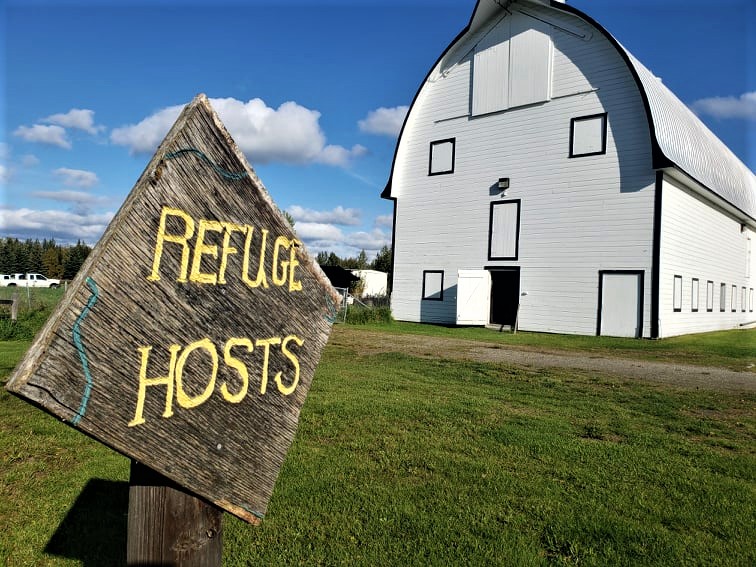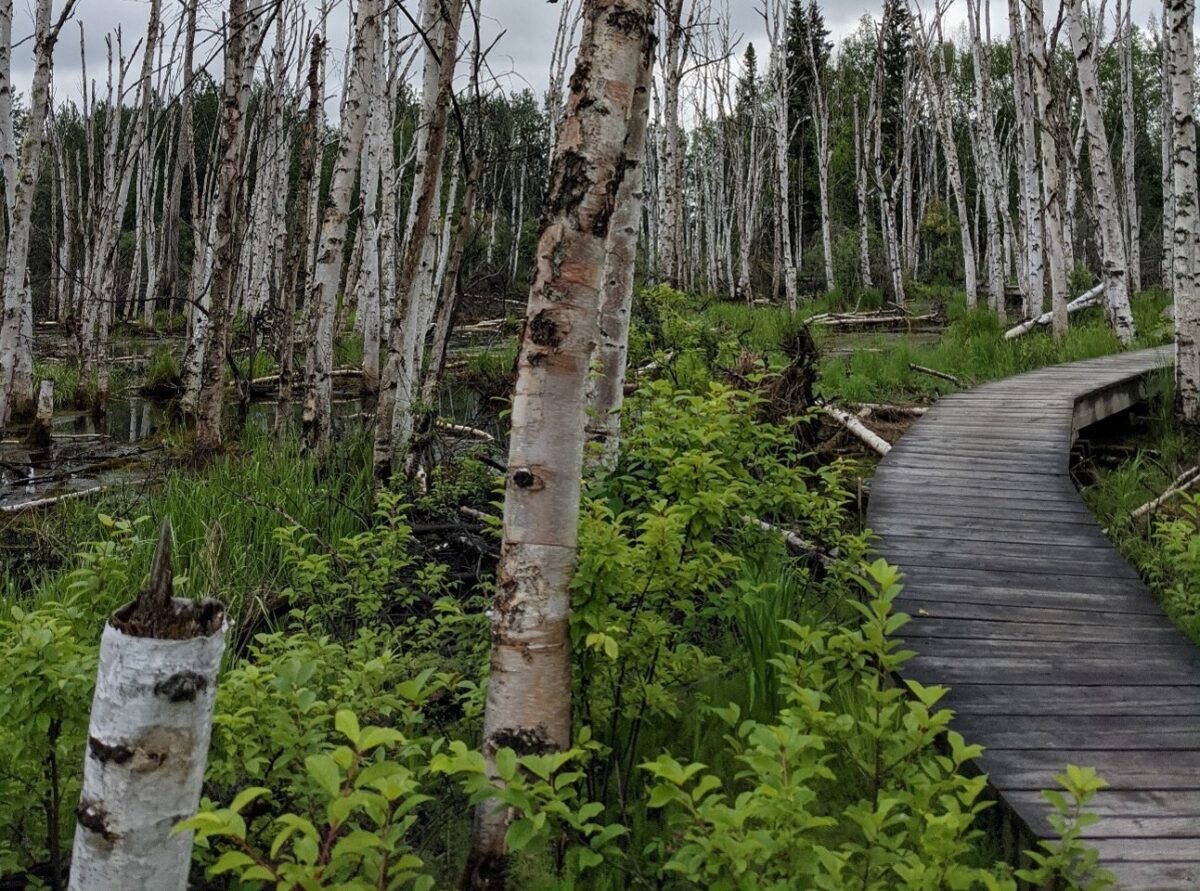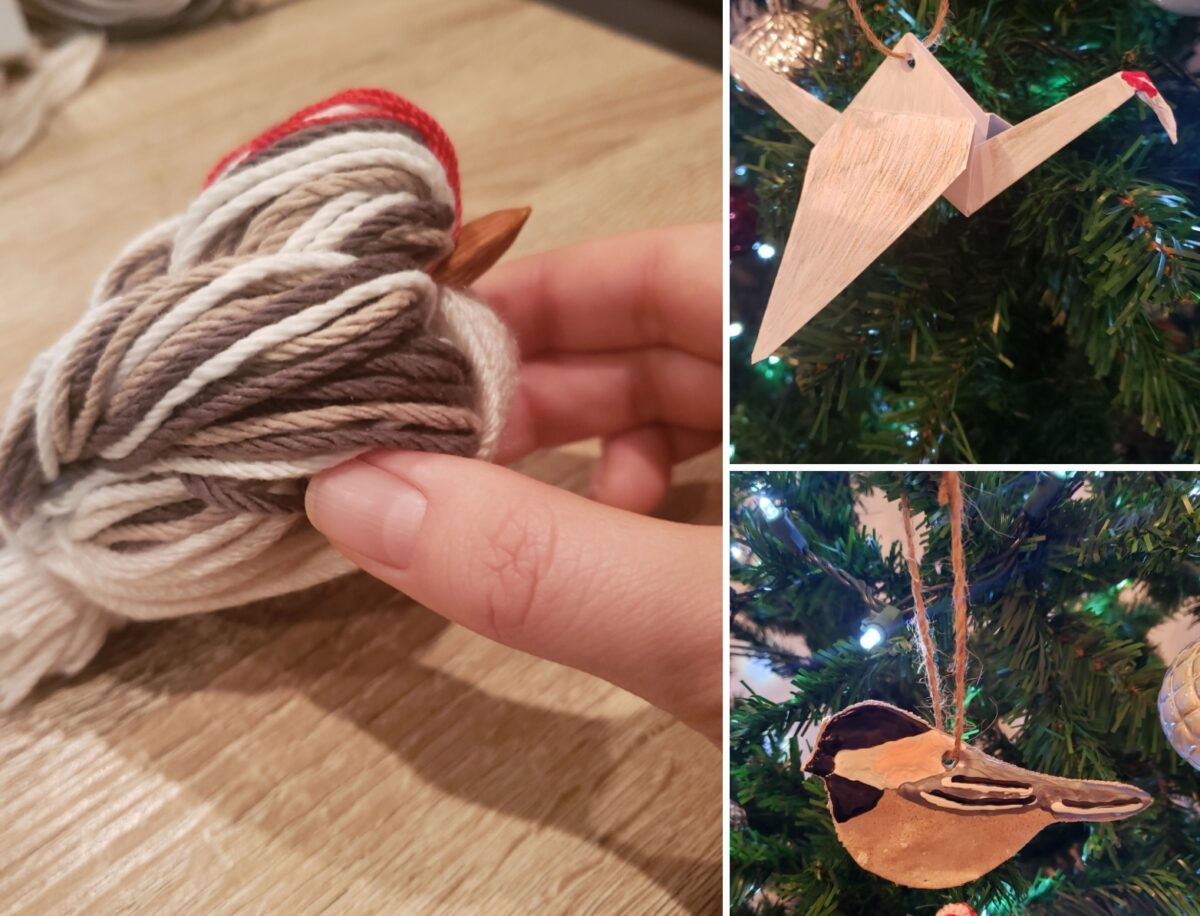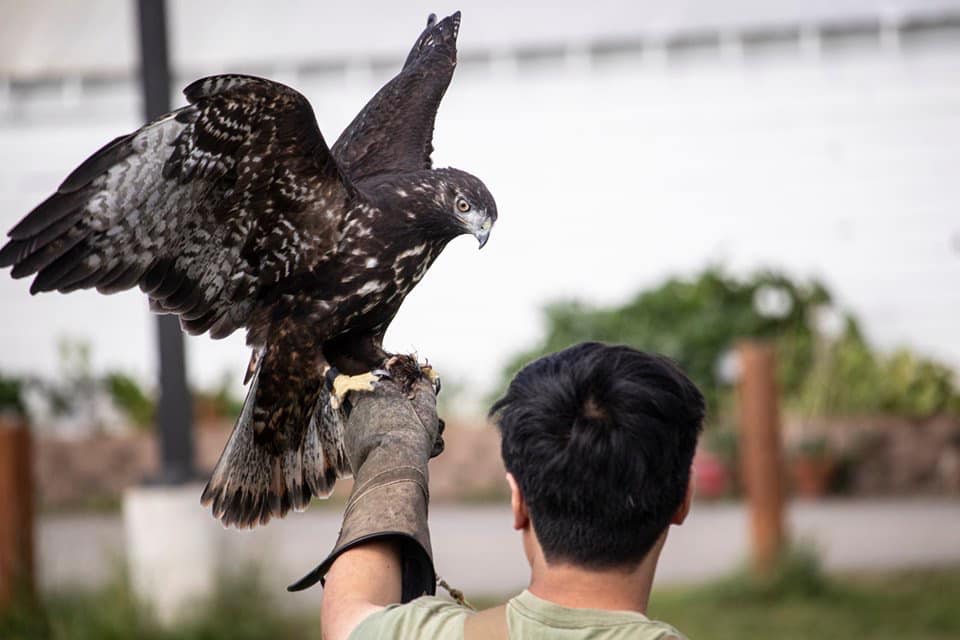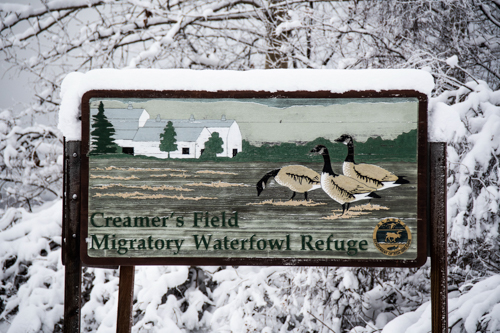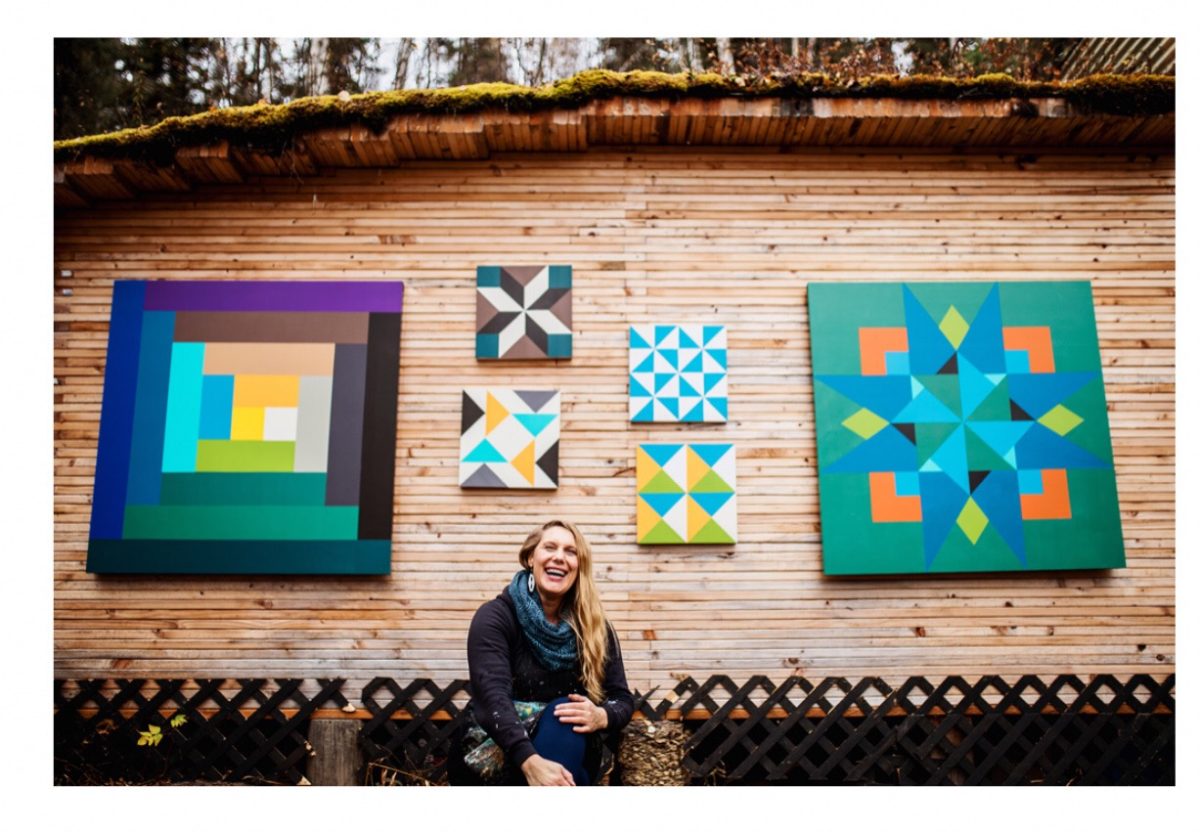Throughout the year, Creamer’s Field Migratory Waterfowl Refuge hosts many resident and migratory birds, mammals, insects, students, scientists, and visitors. On a visit to the refuge, you might have passed the “Refuge Host” sign by the large dairy barn and probably asked: why would this refuge need a host? The farmhouse was renovated in the 1990s to serve as a visitor’s center for the refuge. To ensure that the Farmhouse Visitor’s Center was fully staffed to accommodate visitors, the Refuge Hosting program was set up in 1998. Refuge Hosts serve as volunteers for the Division of Wildlife Conservation of the Alaska Department of Fish and Game. The summer season lasts from May 15 – September 15 and that period is split into three duty periods. Throughout their duty period, volunteering Refuge Hosts stay on site at the RV hook-up area. They provide essential services at and around the 12-acre historic buildings area. Refuge hosts staff the visitor’s center on the …
European Bird Cherry (Prunus padus) and Chokecherry (Prunus virginiana) tree distribution and abundance at Creamer’s Field Migratory Waterfowl Refuge
By Hazel K. Berrios, Natural Resource Technician, and Limor Dubrovsky, Natural Resource Intern, Fairbanks Soil & Water Conservation District Prunus padus and Prunus virginiana (hereafter referred to as Prunus spp.), commonly known as European Bird Cherry and Chokecherry, are native to Northern Europe and across Asia; so how did they get all the way over to Alaska? Both Prunus spp were introduced around 1959 in Alaska by the Alaska agricultural experiment station in Palmer, as an effort to increase tree fruit culture in Alaska. Since then, both Prunus spp. have become common ornamental trees that are planted in residential areas and in public parks. The first collection and record of chokecherry spreading into natural areas was documented by Welsh in 1968 in Palmer. A year later it was documented in the surroundings areas of UAF. Since escaping cultivation, it has spread into native riparian habitats as well as intact forests in the Anchorage, Mat-Su, Kenai, Southeast and Fairbanks areas. Currently, …
DIY Bird Ornament Crafts for the Holidays!
2020 has been a whirlwind to say the least! Unfortunately, we all were unable to gather together this time of year for ornament crafting with our amazing volunteers in the Farmhouse Visitors Center. But that doesn’t mean that our creativity must be stifled when it comes to decorating for the holidays! I have compiled three easy bird ornament crafts that the whole family can create together with the right materials, supervision, and creative inspiration! The first craft is the Origami Sandhill Crane Ornament! Sandhill Cranes are a standout migrating bird that pass through Creamer’s Field during the warmer months. This ornament is sure to be a standout on your tree! Please follow this video tutorial on how to properly fold the paper to create the origami crane! After your paper crane is folded, add physical features so people know it’s a Sandhill Crane! Add the red crown, the yellow eyes, and you can even color orange for the iron rich …
Falconry: A Living Human Heritage found at Creamer’s Field
Nobody can truly say when the first ‘falconer’ came to be; developing the idea of harnessing a bird of prey’s natural beauty and power for their own purpose. From what history has unfolded, falconry may have manifested itself sometime during 1300 BC in the plains of Central Asia. For much of human history, this ‘sport of kings’ was a symbol and key emblem of social standing, wealth, and power. Although, falconry is practiced on a much smaller scale today, it still holds reverence to some of its major premises – the training a birds of prey to hunt for quarry within their natural habitat. A major component of falconry is its involvement with wildlife and environmental conservation. One great story involves our beloved, Peregrine Falcons. The Peregrine crisis began in the 1940s, when DDT, a modern synthetic insecticide was used liberally to combat malaria, typhus, and other insect-borne diseases. Almost 10 years later the population of Peregrines started to decline …
Creamer’s Field Migratory Waterfowl Refuge: A Wonderful Place to Enjoy the Outdoors and Become One with Nature
Each spring, thousands of migrating waterfowl stop in Fairbanks on their way to their northern breeding grounds. These birds have flown many miles from their southern wintering grounds, often arriving in the Golden Heart City before the snow melts, usually in early April. Numerous species arrive every year, including swans, ducks, geese, and sandhill cranes. The Refuge also provides the jumping off point for birds after the breeding season, and before they once again take to the air for the southern wintering grounds. The Refuge is owned by the State of Alaska, and managed by the Alaska Department of Fish & Game (ADFG), which covers over 2,000 acres of forest, wetlands and fields, and is home to resident birds including raptors, ravens, grouse, chickadees and redpolls, plus numerous mammals, both small and large. Wood frogs can also be found, an amphibian that can survive the brutally cold winters thanks to an internal “glycol system” that allows their bodies to freeze solid and return to …
Volunteers from the Fairbanks Garden Club breathe new life into Anna Creamer’s Historical Garden
The Fairbanks Garden Club has been working on gardening projects in Fairbanks since 1953. Last year Friends of Creamer’s Field approached the garden club for some help in restoring and maintaing Anna Creamer’s historic vegetable garden, located in front of the Farmhouse Visitor Center. Susie Crevensten and Liz Masi took on the challenge of restoring and planting the garden in 2019. At the end of the Garden season of 2019, a “Plant America” grant from the National Garden Club came to our attention and Doug and Susie Crevensten applied for it. The “Plant America” grant was focused on improving gardens in the community and the Anna Creamer’s Historic Garden certainly fit that description. The grant also supplied a composter which will always be available for soil enrichment. In 2020, gardeners from the Fairbanks Garden Club became interested in making the Historical Garden a real success. Liz Masi, Carol Slator, Althea St. Martin, Beverly Wright, Marlene Wright, Janet Brower, Susie and Doug Crevensten, Lucy Smyth and …
The Far North Quilt Trail to start at Creamer’s Field
The first time I was saw a barn quilt was several years ago at “Grandma’s Garage Sale” deep in the peat bogs of the Goldstream Valley. I didn’t know what barn quilts were then, but was intrigued by a small painted quilt block of a simple red and white Ohio Star design, and I purchased the piece for 25 cents and brought it home. I didn’t know then that this bold geometric painting would alter the course of my professional painting practice and lead me on the endeavor of initiating Alaska’s first barn quilt trail: the Far North Quilt Trail Project (FNQTP). A brief explanation of this relatively new folk art movement: barn quilts originated in Ohio in 2001, and have grown exponentially in popularity. These large, bold, geometric paintings placed on the sides of barns, businesses and other buildings are now found nationwide. Many barn quilts linked together in one area is known as a quilt trail. These self-guided touring …
- Page 2 of 2
- 1
- 2

